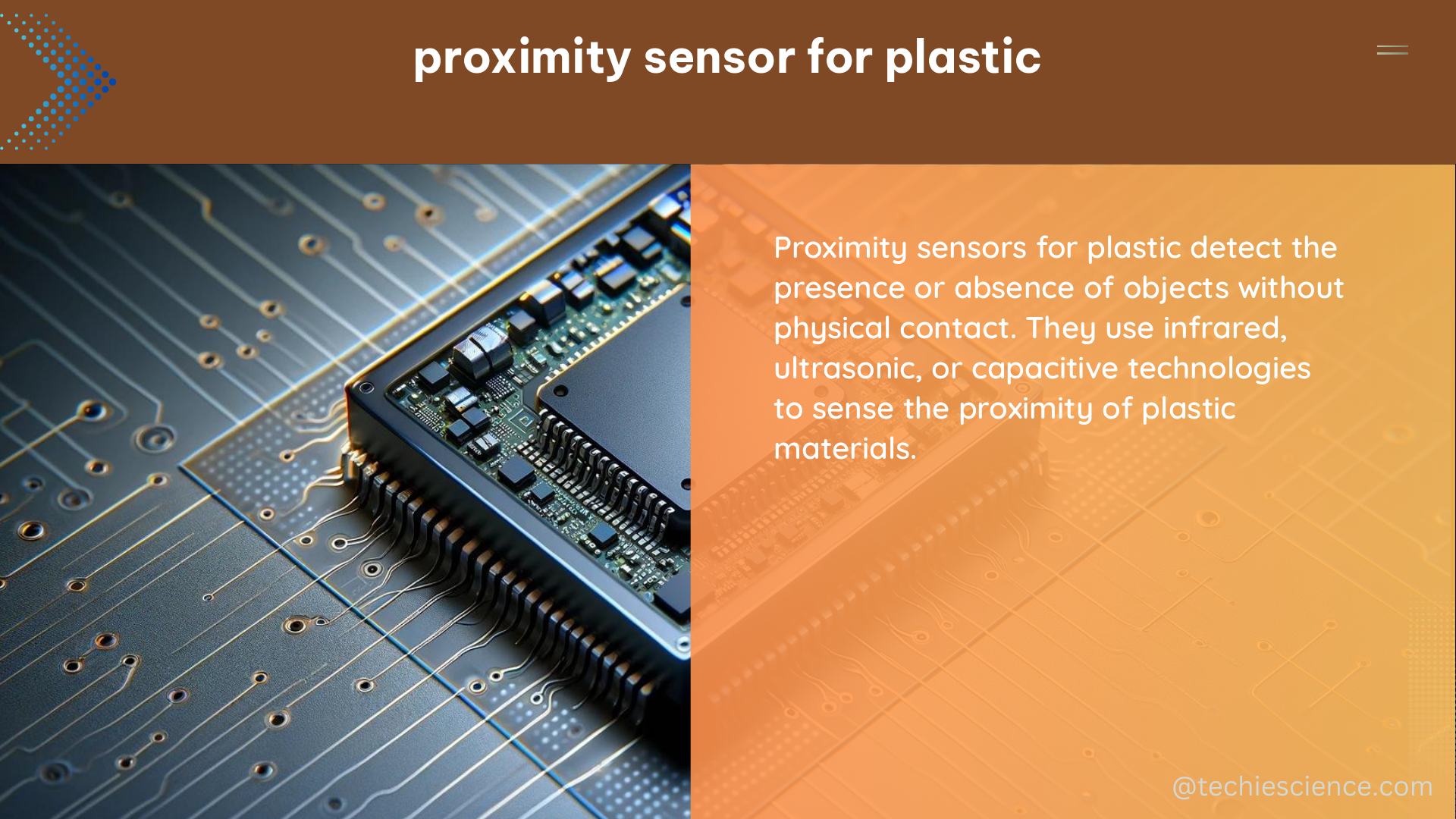Proximity sensors for plastic are essential components in various applications, including industrial automation, robotics, and medical devices. These sensors can detect the presence, absence, or position of objects without physical contact, making them ideal for non-invasive measurements and precise control systems. This comprehensive guide will delve into the key aspects of proximity sensors for plastic, providing you with a deep understanding of their operating principles, environmental adaptability, accuracy requirements, and dynamic characteristics.
Accurate Distance Measurement
One of the critical aspects of proximity sensors for plastic is their ability to measure distances accurately. Inductive proximity sensors, which are suitable for metallic targets, can detect the presence of a target within a specific range with high precision. The operating principle of inductive proximity sensors relies on the generation of an electromagnetic field that induces a current in a conductive target. This current, in turn, affects the sensor’s output, allowing for distance measurement.
The typical operating range for inductive proximity sensors used with plastic targets can vary from a few millimeters to several centimeters, depending on the sensor design and the properties of the plastic material. For example, a high-performance inductive proximity sensor designed for plastic applications may have a sensing range of 5-20 mm, with a repeatability of ±0.1 mm and a linearity error of less than 1% of the full-scale output.
Environmental Adaptability

Another essential factor in proximity sensors for plastic is their environmental adaptability. Environmental effects, such as temperature, pressure, vibration, and electromagnetic interference, can significantly contribute to measurement errors. Understanding and minimizing the impact of these factors is crucial for accurate proximity sensing.
To ensure reliable performance in various environmental conditions, proximity sensors for plastic often incorporate advanced features and design considerations. For instance, temperature compensation circuits can be used to maintain consistent output across a wide temperature range, typically from -25°C to 70°C. Additionally, sensors may be designed with robust housings and sealing mechanisms to protect against the ingress of dust, moisture, and other contaminants.
Accuracy Requirements
Proximity sensors for plastic must meet specific accuracy requirements to ensure reliable and consistent performance. The accuracy of a proximity sensor is often expressed in terms of tolerance, which describes the variations in the reported output among a batch of similar elements due to small random manufacturing errors.
A typical tolerance specification for a high-quality proximity sensor for plastic applications might be ±2% of the full-scale output. This means that for a sensor with a range of 0-10 mm, the actual distance measurement would fall within the range of 9.8-10.2 mm for 95% of the sensors produced.
To achieve this level of accuracy, proximity sensor manufacturers may employ advanced calibration techniques, such as laser interferometry or precision mechanical fixtures, during the manufacturing process. Additionally, the sensor design and materials selection play a crucial role in minimizing the impact of environmental factors on the overall accuracy.
Dynamic Characteristics
The dynamic characteristics of proximity sensors for plastic are essential, as they determine the sensor’s response time and ability to track moving objects. Dynamic characteristics are time-dependent properties of a sensor and include factors such as rise time, settling time, and bandwidth.
Rise time, for example, is the time it takes for the sensor’s output to transition from 10% to 90% of its final value in response to a step change in the input. A fast rise time, typically in the range of 0.1-1 milliseconds, is desirable for applications that require rapid detection of moving objects.
Settling time, on the other hand, is the time it takes for the sensor’s output to stabilize within a specified percentage of its final value after a step change in the input. This parameter is crucial for ensuring accurate measurements in dynamic environments.
Bandwidth, which is the range of frequencies over which the sensor can accurately respond to changes in the input, is another important dynamic characteristic. A higher bandwidth, typically in the range of 1-10 kHz, allows the sensor to track faster-moving objects or respond to rapid changes in the target position.
By understanding and optimizing these dynamic characteristics, engineers can select or design proximity sensors that are well-suited for their specific application requirements, whether it’s high-speed object detection, precise position control, or real-time monitoring of moving targets.
Conclusion
Proximity sensors for plastic are essential components in a wide range of applications, from industrial automation to medical devices. These sensors must provide accurate distance measurements, adapt to various environmental conditions, meet specific accuracy requirements, and exhibit suitable dynamic characteristics.
By understanding the key aspects of proximity sensors for plastic, engineers and designers can select or develop sensors that are tailored to their specific application needs. This comprehensive guide has provided you with a deep dive into the technical details and considerations surrounding proximity sensors for plastic, equipping you with the knowledge to make informed decisions and implement these sensors effectively in your projects.
References:
- Tactile Sensing for Minimally Invasive Surgery – NCBI: https://www.ncbi.nlm.nih.gov/pmc/articles/PMC8777132/
- DEPARTMENT OF DEFENSE STANDARD PRACTICE – CADE: https://cade.osd.mil/Content/cade/files/coplan/MIL-STD-881F_Final.pdf
- Sensor Technology Handbook – OLLINTEC: http://ollintec.com/fie/sensores/libros/Sensor%20Technology%20Handbook.pdf
- Sensing and Sensor Fundamentals – SpringerLink: https://link.springer.com/chapter/10.1007/978-1-4302-6014-1_2
- Digital Habit Evidence – Duke Law Scholarship Repository: https://scholarship.law.duke.edu/cgi/viewcontent.cgi?article=4144&context=dlj

The lambdageeks.com Core SME Team is a group of experienced subject matter experts from diverse scientific and technical fields including Physics, Chemistry, Technology,Electronics & Electrical Engineering, Automotive, Mechanical Engineering. Our team collaborates to create high-quality, well-researched articles on a wide range of science and technology topics for the lambdageeks.com website.
All Our Senior SME are having more than 7 Years of experience in the respective fields . They are either Working Industry Professionals or assocaited With different Universities. Refer Our Authors Page to get to know About our Core SMEs.